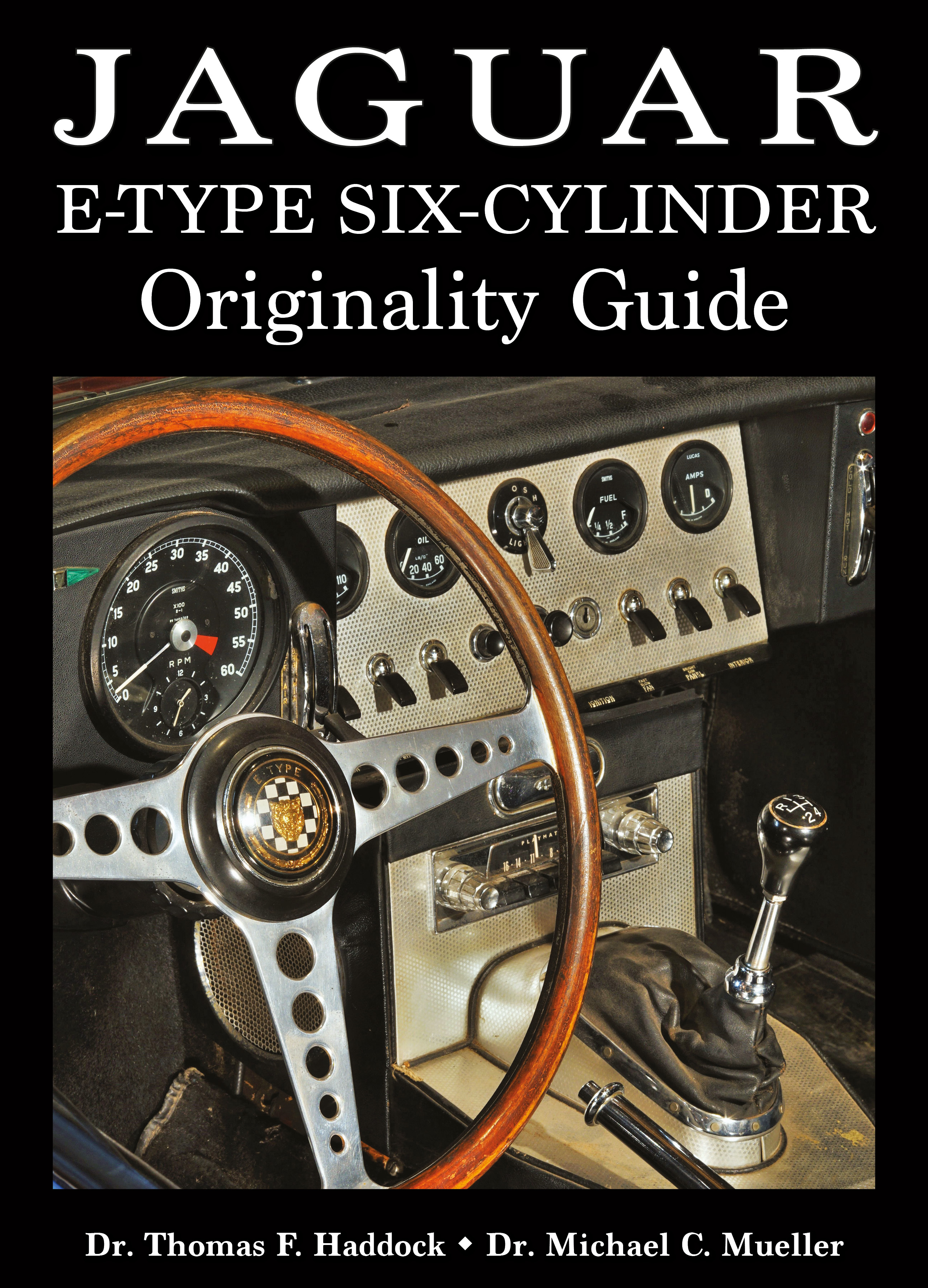
|
|
|
|
|
|
RB310 voltage regulator
The RB310-type regulator was fitted to the outside-latch E-types.
This early regulator is very distinct from the replacement type, the RB340. RB340 units had an injection-molded black plastic cover.
|
|
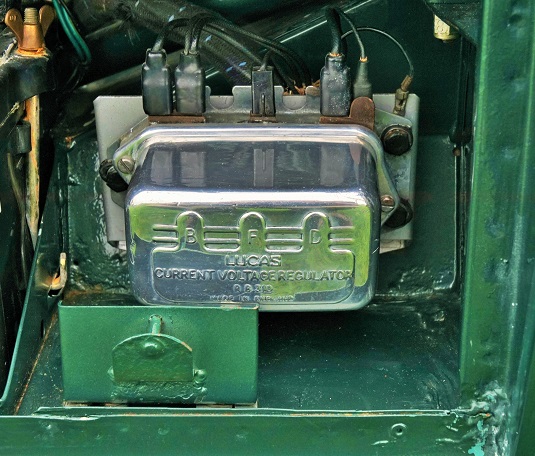
|
|
|
|
|
|
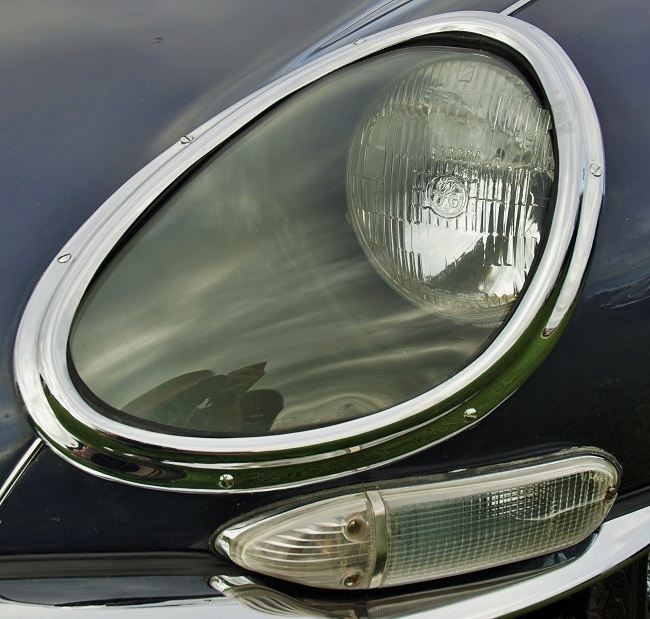
|
|
Close-up of headlight assembly on an early Series 1 E-type
This view shows the early slot head chrome screws retaining the headlight glass.
The sealed-beam headlight bulb was the sort used for U.S.-market cars. Early cars had "GE" sealed-beam bulbs, as shown here. Later U.S.-market cars had "LUCAS" sealed-beam bulbs. See, for example, one here.
|
|
|
|
|
|
Polished V-12 engine
The V-12 engine was not supplied from the factory polished in this manner, and with so many pieces chromed.
This picture illustrates the complexity of the V-12 engine.
|
|
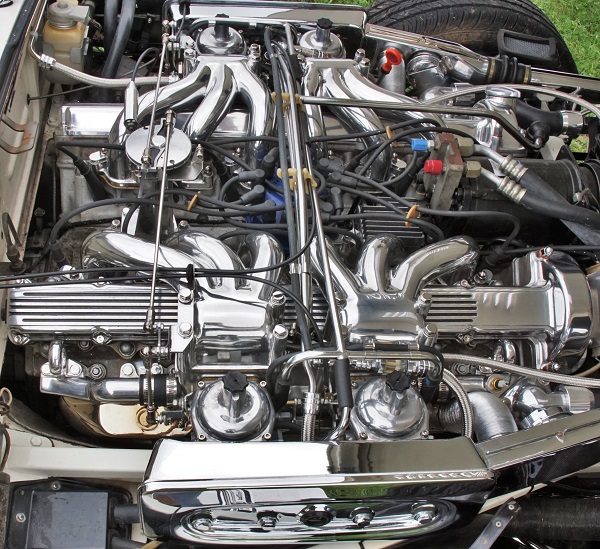
|
|
|
|
|
|
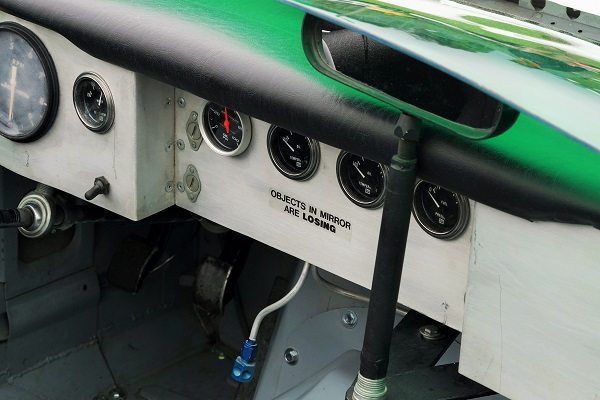
|
|
Dash of a Group 44 racing E-type
Interesting legend appears below the central instruments.
|
|
|
|
|
|
Talbot racing mirror marking
The raised stamped region of a Talbot racing mirror shows the name and origin of the maker, Talbot & Co.
This image was taken looking straight down on the chromed surface of the flat circular stamped area, and the dark circular region is a reflection of the dark camera, not the color of the mirror surface, which is polished chrome.
|
|
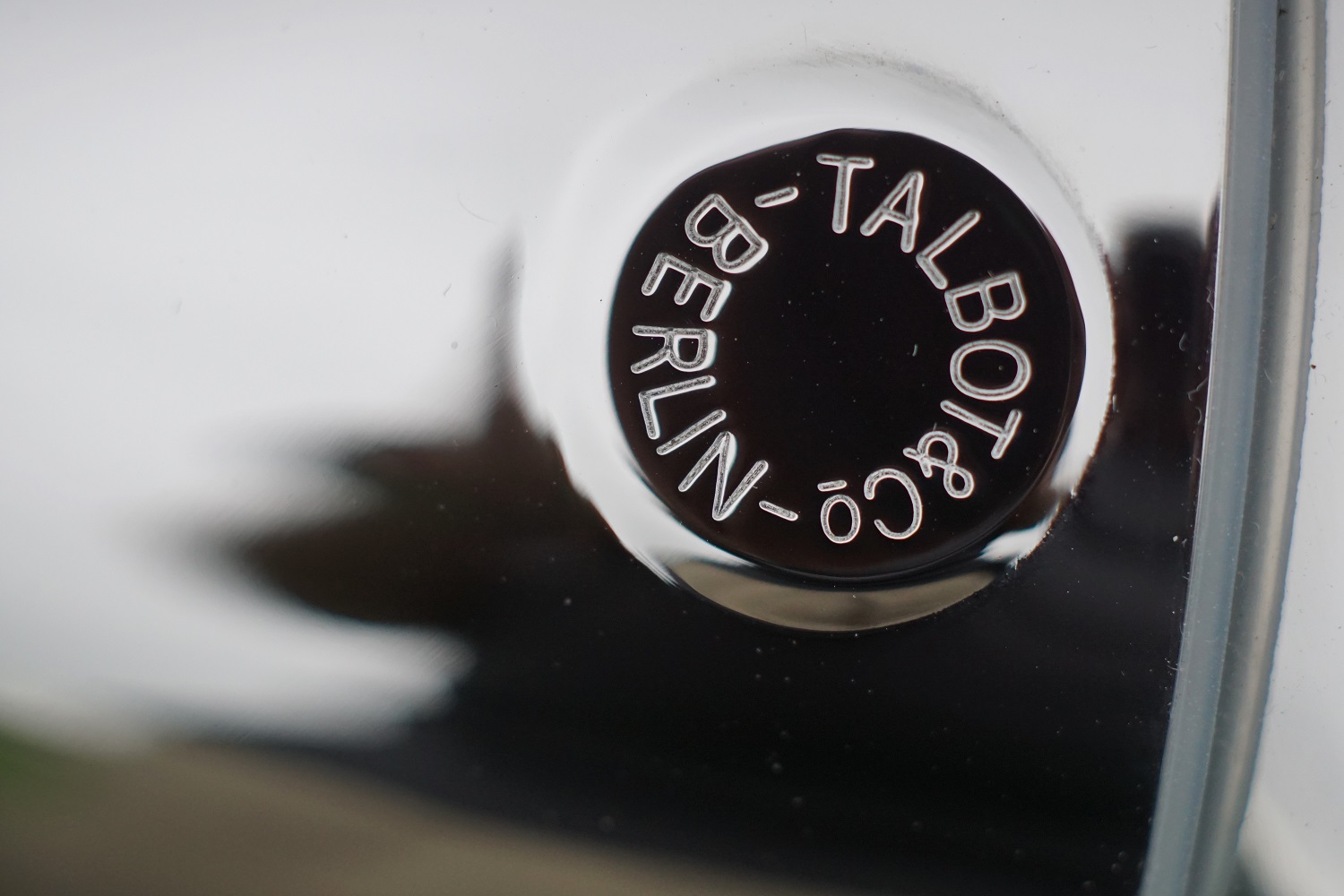
|
|
|
|
|
|
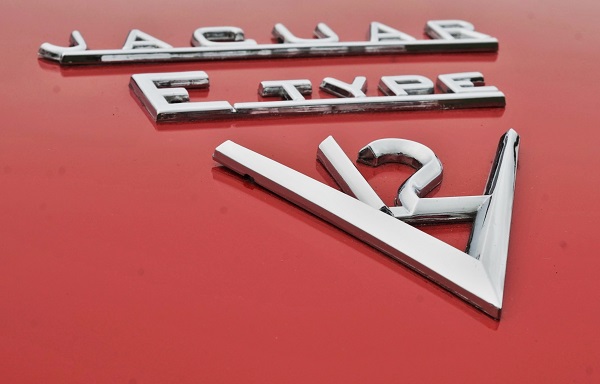
|
|
Trunk-lid labeling on a V-12 roadster
The markings seen here on this V-12 car indicate the engine configuration, but not the 5.3-liter displacement.
The prior model, the 4.2-liter six-cylinder E-type stated the displacement, and also had the "E TYPE" label. The earliest 3.8-liter cars had only the "JAGUAR" label.
While most of the lettering is basically flat, the "V12" label is sculpted in a fully three-dimensional way. The edges of the "V" and the "12" are all angled at roughly 45-degrees to give a different reflection pattern than the rest of the letters.
|
|
|
|
|
|
Beautifully original 1962 E-type roadster
This car was wonderfully preserved.
It was described as haveing been in the same family since new.
Such cars are extremely rare, and illustrate the original state of many fine details that are typically lost in restorations.
Preservation of such cars is of great value to preserve our undersanding of the configuration E-types at their particular point in production.
|
|
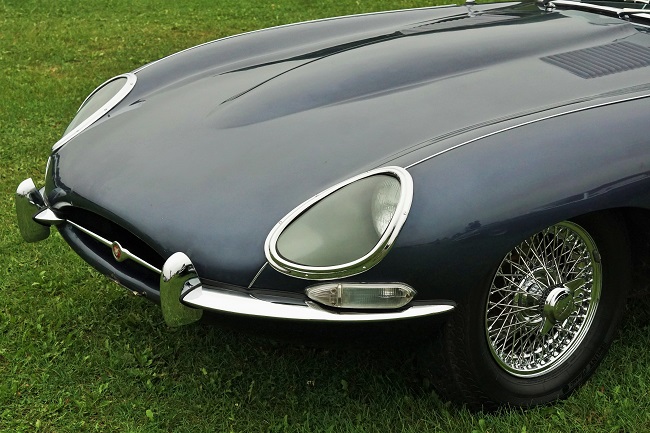
|
|
|
|
|
|
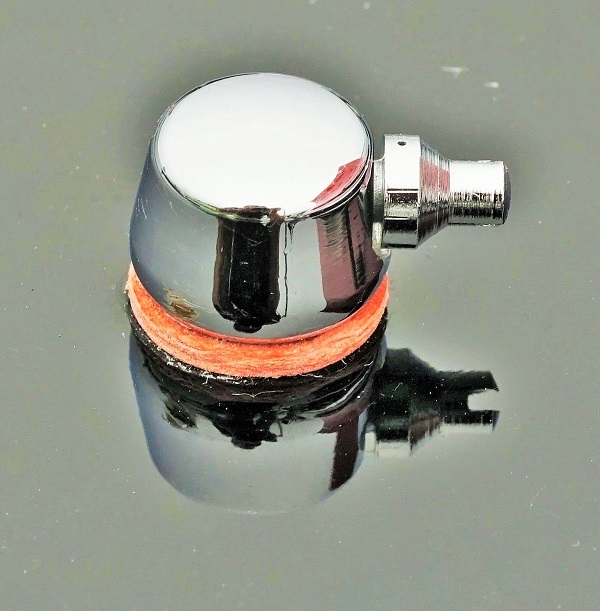
|
|
Windshield-washer nozzle
The operation of theis Series 1 E-type washer nozzle can be seen in the nozzle itself, as well as its reflection.
The small hole from which the washing fluid emanates is seen on the top of the section cantilevered out from the large conical base.
Adjustment of the direction of spray is accomplished in azimuth by rotating the entire nozzle assembly. Elevation adjustment is done by putting a screwdriver in the slot on the end of the cantilvered section.
br>
THis slot can be seen in the reflection on the lower right region of the picture.
|
|
|
|
|
|
Racing E-type
This heavily-modified E-type road-racer had gold wheels and large side pipes.
It was very loud.
|
|
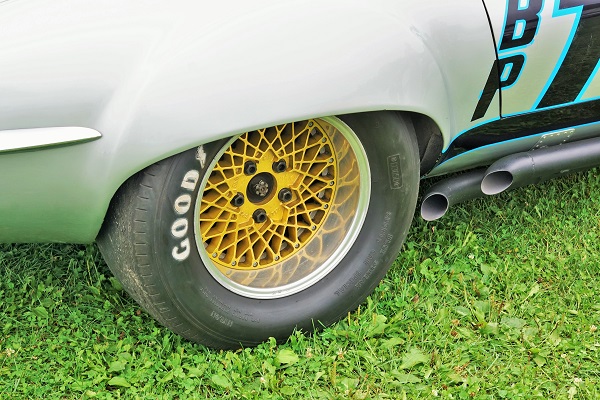
|
|
|
|
|
|
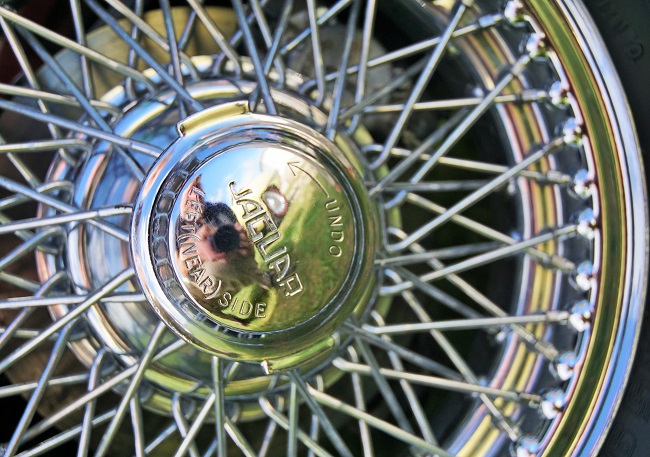
|
|
Early European-style knockoff
These early "earless" knockoffs were used in certain countries, including Germany.
The style is quite different from that of the Series 1.5 and later "earless" knockoffs. The later design used smooth lobes instead of the square lobes seen here.
|
|
|
|
|
|
Group 44 Racing E-type
These cars were campained successfully by the Bob Tullius team.
|
|
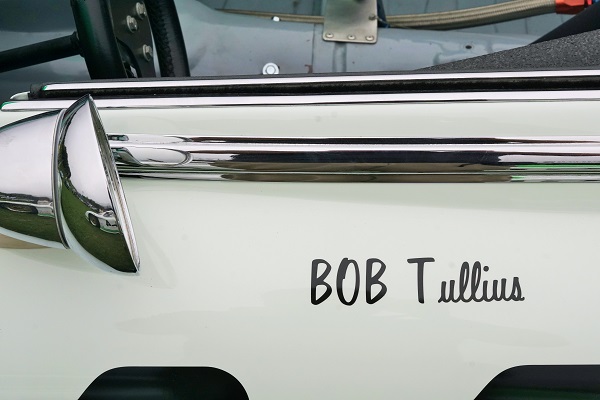
|
|
|
|
|
|
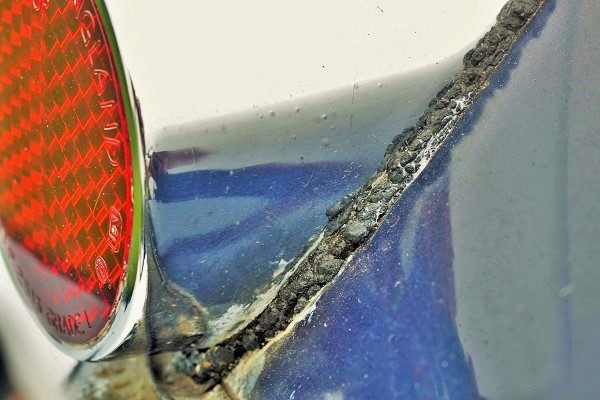
|
|
Close up of left-rear taillight and seal
This may be original paint and the original seal of this very well-preserved car.
|
|
|
|
|
|
Black 4.2-liter E-type
While the coupe bodystyle of the E-type was in some sense an afterthought in the design process, it is one of the most beautiful automotive designs ever brought to production.
Enzo Ferrari is often quoted as saying the E-type was "The most beautiful car ever made."
|
|
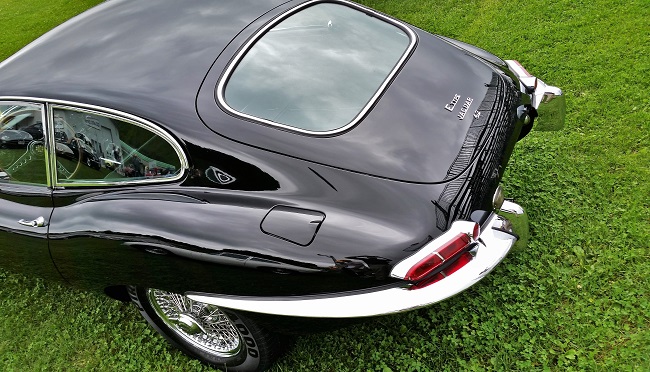
|
|
|
|
|
|
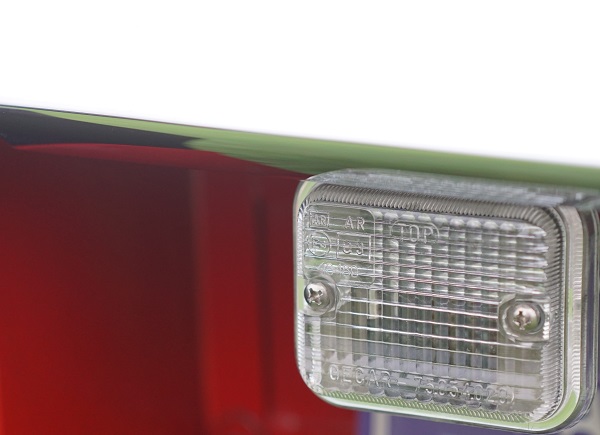
|
|
Backup light from a V-12 E-type
Two of these small lights were used on tht V-12 cars.
This was a change from the large backup light used on earlier E-types.
|
|
|
|
|
|
Series 1 E-type bonnet
The bulge running down the center of the E-type's bonnet, sometimes referred to as a "power bulge," is not merely a styling exercise, but a functional part of the car.
This feature serves to let the bonnet clear the front of the XK engine where the timing chain gallery is located. It also serves as an exhaust vent at its rear to aid in extracting heat from the engine compartment.
This sort of authenticity pervades the E-type. It sets the car apart from heavily stylized cars such as the Corvette, that used non-functional purely stylized featues like simulated hood vents or hubcaps with artifical three-eared knockoffs.
|
|
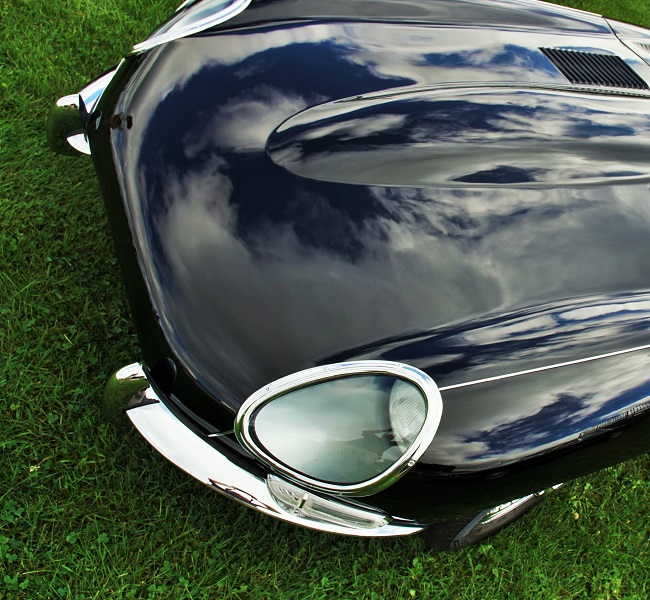
|
|
|
|
|
|
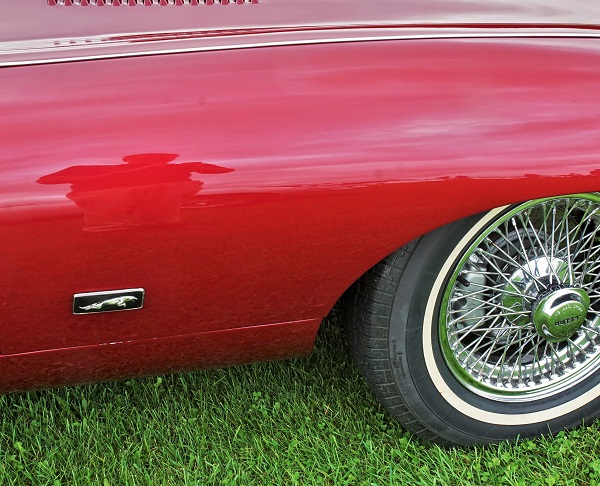
|
|
Leaping Jaguar on the side of the bonnet
This is another illustration of this interesting feature.
As noted elsewhere in haddockjaguar.com, this feature on the final year of 6-cylinder E-type production (1971) was located in about the same position as the teardrop-shaped T-key covers were on the first year of E-type production ten years earlier (1961).
This similarity was likely not planned. When this new model was coming out there was generally very little awareness of the outside-latch configuration, even among Jaguar enthausiasts.
|
|
|
|
|
|
SU HD-8 on 3.8-liter Series 1 E-type XK engine
This carefully-restored engine shows the second type of throttle linkage, comprised of fewer pieces than the earlier version.
|
|
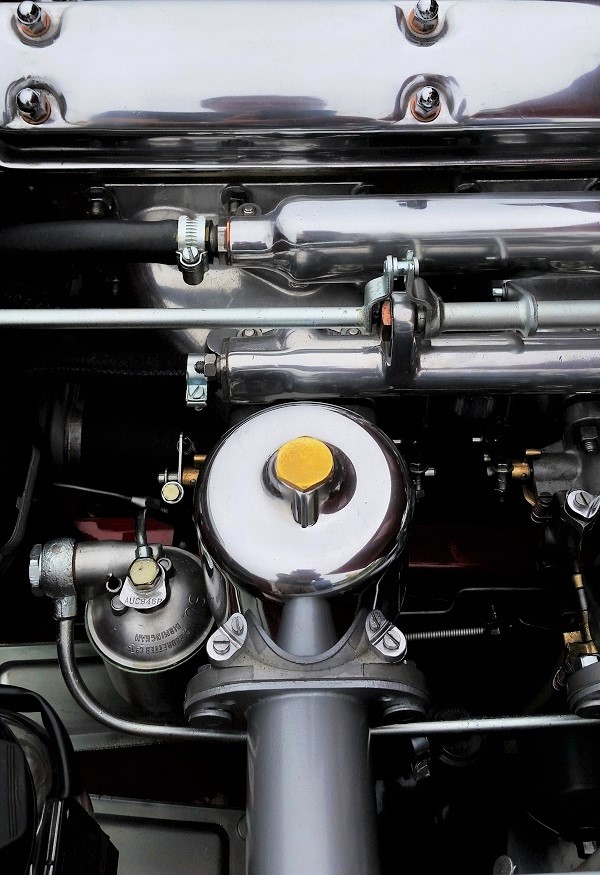
|
|
|
|
|
|
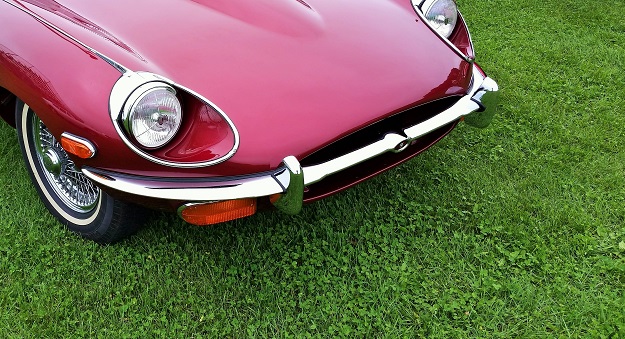
|
|
Series 2 E-type front end
This car is fitted with Lucas PL headlights, a feature appropriate for earlier cars.
|
|
|
|
|
|
Green E-type on grass
The bonnet, slightly open, shows the T-key cover for the external latch mechanism.
This car was the only outside-latch car to attend the 2015 JCNA Challenge Championship.
|
|
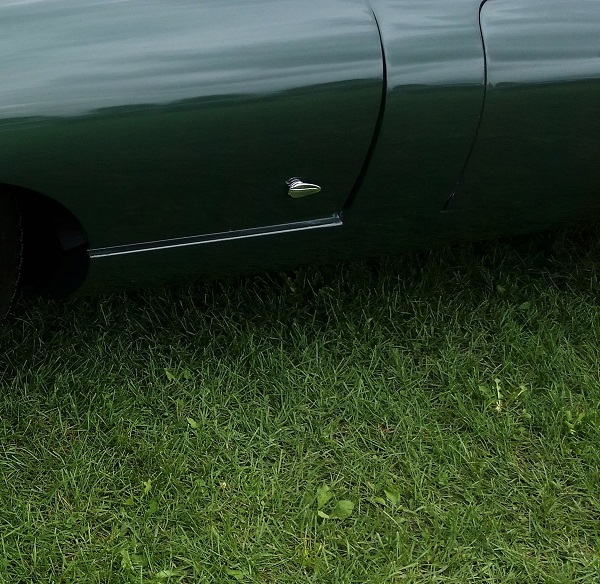
|
|
|
|
|
|
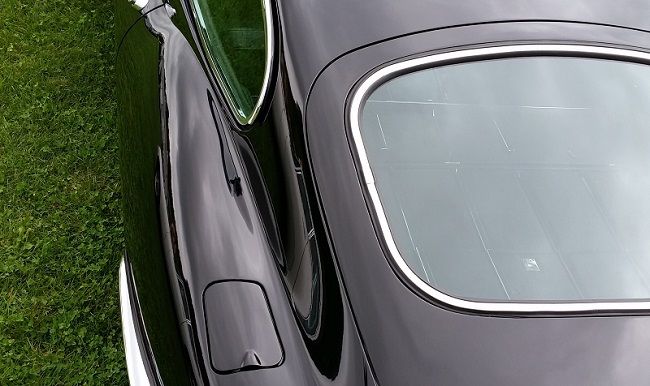
|
|
4.2-liter E-type coupe rear window
The luggage-protection rails show through the rear window of this restored coupe.
The recessed chromed ring to lift out the floor panel can be seen in the lower right of the picture.
|
|
|
|
|
|
Trunk lid of very original 3.8-liter E-type
This early roadster is reported to have its original paint, and does appear so.
The dealer label is still present just behind the trunk lid.
|
|
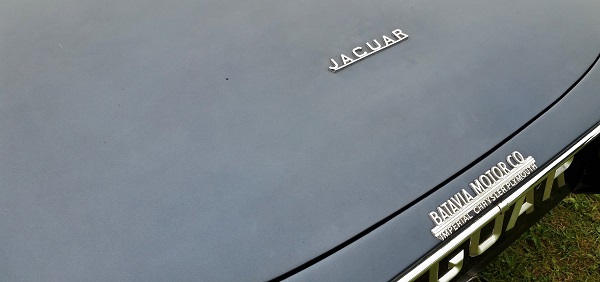
|
|
|
|
|
|
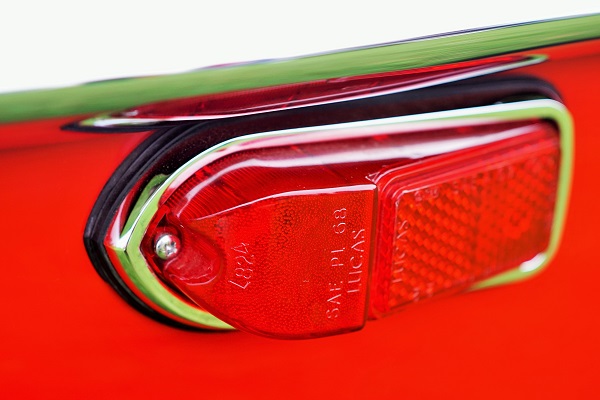
|
|
Series 2 sidelight
Sidelights such as this one on a Series 2 E-type were introduced to satisify the U.S. Federal Motor Vehicle Safety Standards (FMVSS) that came in January 1, 1968.
Many feel this was just one of many alterations that distracted from the original Series 1 design.
Over time, the number of these types of modifications increased.
|
|
|
|
|

